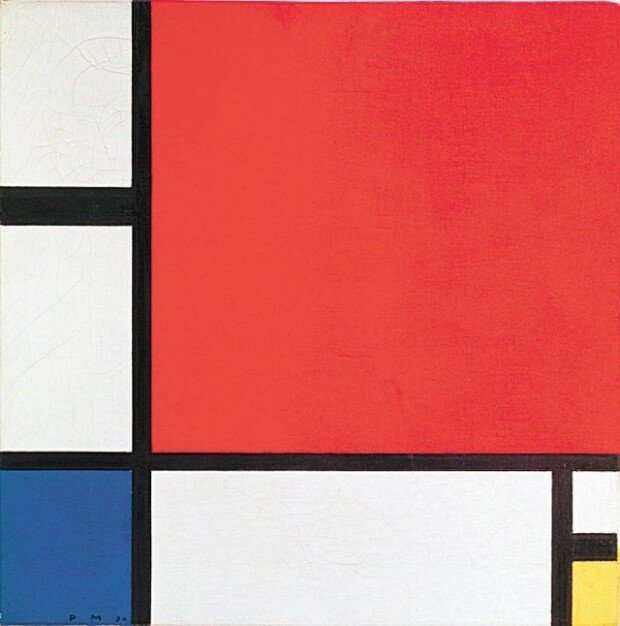The virtue of subtraction
The virtue of subtraction
Posted February. 17, 2022 07:40,
Updated February. 17, 2022 07:40

On a square canvas are red, blue, and yellow rectangles and five black lines. This rather simple painting is one of the most representative works by Piet Mondrian. One may sneer and think, ‘I can draw this.’ However, this is a masterpiece in the art history. Why is this seemingly easily drawn painting considered a great work? What did Mondrian want to convey through this painting?
Piet Mondrian was born in the Netherlands from a pious Christian family. He entered the Academy for Fine Art in Amsterdam at the age of 20 and started his artistic career. Mondrian’s early paintings showed a degree of impressionistic style. In 1911, at the age of 39, Mondrian went to Paris and studied the Cubist works, which marked a considerable turning point. Departing from representational painting, Mondrian began producing abstract paintings. He used simple lines and forms, with a fewer number of colors. From 1920s, Mondrian categorically refused to draw representational paintings and fully embraced the art of pure abstraction.
Simply put, Mondrian’s paintings embodied the essence of simplicity and moderation. He broke away from the traditional ways of using the geometric elements like form, hues, and perspectives and transitioned into using vertical and horizontal lines, three primary colors, and achromatic colors. Termed as Neoplasticism, Mondrian’s style was based on theosophy, which studies spiritual essence of the world and human. The artist sought to portray the beauty of order and balance through the art, believing that the most basic elements were the most beautiful. The Dutch painter also argued that his painting revealed the pure essence and origin of the universe. This work embodies the quintessence of Mondrian’s artistic belief.
It is easy to add, but hard to subtract. It is more difficult to take out than to fill up. It is same with life. Trying to satisfy one’s greed is easy, but emptying out desires is not. Mondrian would have surely wanted to submit to his desire to use more colors and draw more freely without restraint. Taking less, being moderate, and staying true to the basic. These principles might have been the virtue of subtraction that Mondrian wanted to convey through his paintings.
Headline News
- Joint investigation headquarters asks Yoon to appear at the investigation office
- KDIC colonel: Cable ties and hoods to control NEC staff were prepared
- Results of real estate development diverged by accessibility to Gangnam
- New budget proposal reflecting Trump’s demand rejected
- Son Heung-min scores winning corner kick







